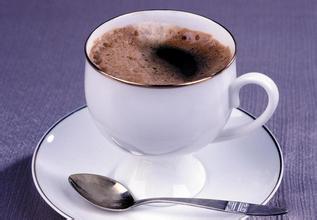Hawaii, the only coffee producer in the United States.
The characteristics of Hawaiian coffee:
Kona coffee beans from Hawaii have the perfect appearance. Their fruit is extraordinarily full and shiny. The taste of coffee is rich and aromatic, with cinnamon flavor, and the acidity is well balanced.
The best Kona coffee is divided into three grades: ExtraFancy, Fancy and NumberOne. This third-class coffee is produced on manors and under natural conditions. Most of the coffee that calls itself "Kona" now contains less than 5% of the real Hawaiian Kona coffee. Another good Hawaiian coffee can be found in the United States-Hawaiian Kaj Farm Coffee (KaiFarms). Real Kona coffee is indeed a treasure in the world and is not easy to find.
Flavor: smooth, fragrant, with attractive nutty aromas
Suggested roasting method: mild to moderate roasting all the islands of Hawaii have coffee trees grown for commercial purposes, but at present, the large island has the largest number of coffee farms, about 650, but these coffee farms are relatively small, adding up to less than 2000 acres of planting woodland, while there are only 25 coffee farms operating on the islands of Maui, Molokai, Oahu and Kauai. However, the coffee plantations in these places are much larger than those on the big island, and the total output is more than three times that of the big island coffee garden. Surprisingly, Kauai Island has the largest coffee-growing area of any island, with more than 4000 acres, but all are managed by the same operator, while Molokai Island has only 550 acres of coffee-growing land, with even fewer Maui and Oahu. Most Hawaiian coffee farmers still pick fresh coffee cherries to sell today, but in recent years more and more people are committed to adding value to their coffee bean products, so most of them go to their own post-processing, drying, grinding and baking their own coffee beans.

Important Notice :
前街咖啡 FrontStreet Coffee has moved to new addredd:
FrontStreet Coffee Address: 315,Donghua East Road,GuangZhou
Tel:020 38364473
- Prev

Boutique Coffee in Costa Rica Coffee Manor producing area Fire Phoenix Manor Lajas Manor Central Mountain
Costa Rican coffee market: coffee exports account for 25% of Costa Rica's total exports. Costa Rica has also benefited from the establishment of the Central American Institute for Agricultural Research (TurrialbaoftheCentralAmericanAgriculturalResearchlnstitute, referred to as IAAC) in Tarasu, which is an important international research centre. The coffee industry in Costa Rica used to
- Next

Kenya Coffee Plantation Berman Manor SASINI Manor
There are two types of coffee farms in Kenya. one is a large planting farm that covers an area of more than five acres, but the average elevation is low. In the case of Kenyan coffee, the coffee beans of the large farms are of medium quality. The best Kenya beans are produced in small farms, most of which are located in the foothills or volcanic slopes above 5,000 to 6,000 feet. Each small farmer has a capacity of only 20 to 70 bags per season and is unable to invest.
Related
- Detailed explanation of Jadeite planting Land in Panamanian Jadeite Manor introduction to the grading system of Jadeite competitive bidding, Red bid, Green bid and Rose Summer
- Story of Coffee planting in Brenka region of Costa Rica Stonehenge Manor anaerobic heavy honey treatment of flavor mouth
- What's on the barrel of Blue Mountain Coffee beans?
- Can American coffee also pull flowers? How to use hot American style to pull out a good-looking pattern?
- Can you make a cold extract with coffee beans? What is the right proportion for cold-extracted coffee formula?
- Indonesian PWN Gold Mandrine Coffee Origin Features Flavor How to Chong? Mandolin coffee is American.
- A brief introduction to the flavor characteristics of Brazilian yellow bourbon coffee beans
- What is the effect of different water quality on the flavor of cold-extracted coffee? What kind of water is best for brewing coffee?
- Why do you think of Rose Summer whenever you mention Panamanian coffee?
- Introduction to the characteristics of authentic blue mountain coffee bean producing areas? What is the CIB Coffee Authority in Jamaica?

